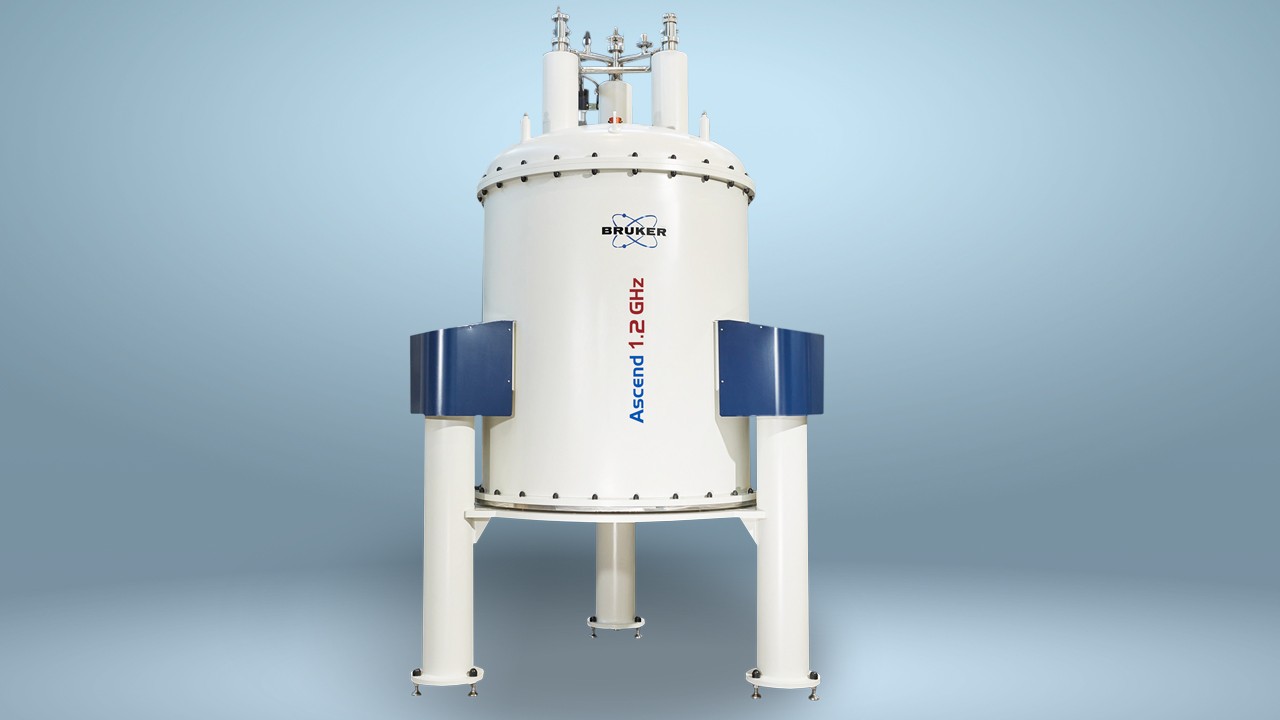

A Nobel Legacy: Astbury Centre for Structural Molecular Biology
Each October, Nobel Prize announcements draw our attention to the latest and best work in physics and chemistry. As we note the news, it’s worth a look back at Nobel Laureates of the past and the transformation of some early sites of Nobel brilliance.
One such site is the University of Leeds, where the development of X-ray crystallography a hundred years ago garnered the 1915 Nobel Prize for Physics. Recently, the university solidified its standing as a leader in structural biology with a $26-million investment. By bringing the best Bruker technology and equipment together in one location, the Astbury Centre has become the leading and best equipped site of its kind in the United Kingdom.
The site houses the 950 MHz nuclear magnetic resonance (NMR) magnet, newly upgraded 600 and 750 MHz NMR machines and two state-of-the-art FEI 300 kilovolt cryo-electron microscopes (EM) to add to existing 120kV and 200kV systems.
The crown jewel of the lab, the 950 MHz NMR, with its powerful magnet, makes it possible for scientists to get the most advanced view of complex molecules and sophisticated biological processes.
In 1928, University of Leeds Professor William Astbury, namesake of the Astbury Centre for Structural Molecular Biology, demonstrated that the technologies and techniques of physics could change the study of biology. His laboratory at Leeds was so advanced it was called the “X-ray Vatican” by Max Perutz, who won the 1962 Nobel Prize in Chemistry for his work identifying the structure of hemoglobin. Astbury’s studies of the structure of the DNA of wool is often noted for its importance to later work on DNA by Nobel Laureates Francis Crick and James Watson.
Today, the University of Leeds Astbury Centre for Structural Molecular Biology is poised for more progress.
“We are at a time now in structural biology when we are starting to be able to see things, and understand things, that a few years ago were completely out of our reach,” said Dr. Zhuravleva, a lecturer in Molecular and Cellular Biology in the University’s Astbury Centre for Structural Molecular Biology. “And that is largely down to equipment like this.”
Chaperone proteins
Dr. Anastasia Zhuravleva studies “chaperone proteins.” When proteins fold up incorrectly and then build up, that can cause diseases like diabetes, Alzheimer’s and Parkinson’s. So-called “chaperone proteins” oversee the behavior of other proteins, ensuring that they fold up properly. According to Dr. Zhuravleva, traditional techniques could reveal the structure of chaperone proteins. But, she explains, researchers need to know more, they need to see how the proteins interact to understand how disease develops.
Protein Structure and Function in Cancer
Dr. Edwin Chen, who recently moved from Harvard Medical School to the University of Leeds, is exploring how a mutated version of the protein calreticulin is causing a specific form of adult leukemia.
Chen believes NMR technology has the unique ability to unveil how disordered and dynamic proteins like calreticulin function. He notes that there are hundreds of mutations implicated in different cancers, but there is little understanding of what such mutant proteins do at a biological level to cause disease. Chen believes the new NMR equipment may make it possible to understand the basic biology of how an entire new class of proteins behaves to cause cancer.
Dr. Darren Tomlinson, another Leeds researcher, studies how artificial proteins bind to and negate the power of cancer-causing proteins. He believes the Astbury Centre now is equipped to view how a molecule is binding to a cancer protein. That understanding may make it possible to develop new drugs.
Professor Sheena Radford, Astbury Professor of Biophysics and Director of the Astbury Centre, said: “The more we can understand the fundamentals of the biology of our bodies, the more opportunity there is to understand clever ways of intervening and changing lives. We are investing in the very best equipment because it will allow us to bring the most talented people to Leeds and allow the people we have to do the best science.”


